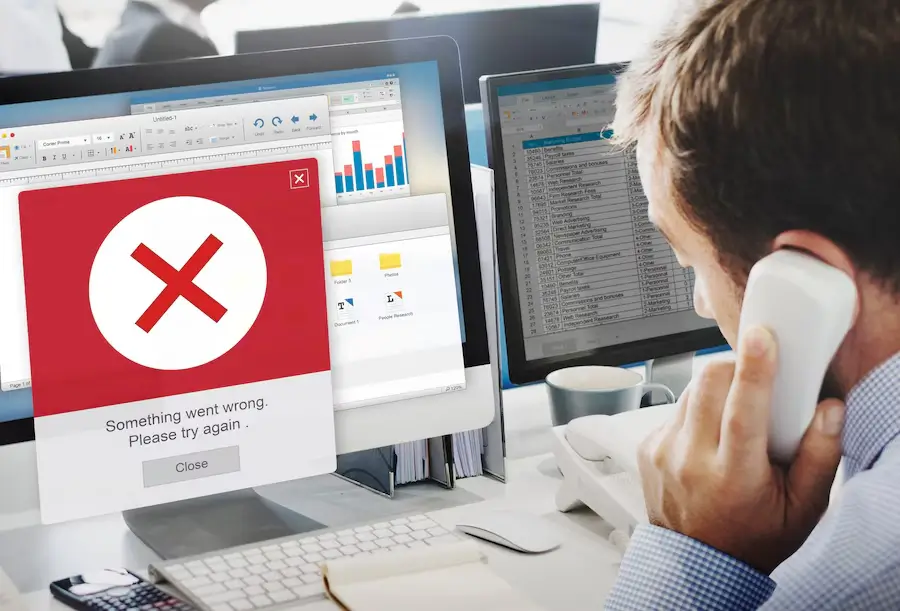Understanding the Threat: Fake Trading Platforms
In the digital age, online investing is becoming increasingly popular. However, along with the growing popularity of trading, the number of fraudulent schemes aimed at deceiving investors is also increasing. Fake trading platforms are a trap for inexperienced investors who may lose their savings, thinking they are investing in a profitable venture.
The main goal of scammers creating fake trading platforms is to extract maximum profit from the trust and ignorance of users. It is important to understand that you can only protect your funds by being aware of potential threats and knowing how to recognize them.
Signs of a Fake Trading Platform
1. Lack of License and Regulation
One of the most obvious red flags indicating a fake platform is the absence of licenses and regulation. Legal brokers are required to register and obtain licenses from financial regulators such as CySEC, FCA, or ASIC. Checking the broker's licensing is the first step in determining its legitimacy.
- Check the regulator's website: Most financial market regulators have online registries where you can check if a broker is licensed.
- Beware of false claims: Scammers may claim they have licenses that do not actually exist.
2. Unrealistic Promises
Scammers often use unrealistic promises of huge profits in a short time to attract more victims. Genuine brokers always warn about the risks associated with trading and do not guarantee profits.
- Too good to be true: If a platform promises you high returns without risk, it's a sure sign of fraud.
- Lack of transparency: Legitimate brokers provide full information on risks and trading conditions.
3. Reviews and Reputation
The absence of reviews or numerous negative reviews on the internet is another indicator of a fake platform.
- Check forums and social media: If a platform has many negative reviews, it's a reason to be cautious.
- Beware of fake reviews: Scammers may create fake reviews to improve their reputation.
4. Problems with Withdrawing Funds
Fake brokers often create difficulties with withdrawing funds, which is one of the main signs of fraud.
- Delays and additional fees: If a platform makes you pay extra fees or constantly delays withdrawal, it's a serious red flag.
- Lack of support: The absence of adequate customer support can also indicate fraud.
How to Avoid Being Scammed by Fake Platforms
1. Conduct Thorough Research
Before trusting any platform with your funds, conduct thorough research. This includes checking licenses, reading reviews, and studying terms of use.
- Check legal information: Legitimate platforms always provide detailed information about their legal registration.
- Study trading conditions: Carefully read all terms and agreements to avoid unexpected surprises.
2. Use Demo Accounts
Many legitimate brokers offer demo accounts that allow users to test the platform without risking real money.
- Test before investing: Use demo accounts to check the platform's functionality and explore its interface.
- Evaluate support: Check the quality of customer support using a demo account.
3. Education and Financial Literacy
Investing in your own education is one of the best ways to protect yourself from fraud.
- Attend courses and webinars: Participating in educational events will help you better understand the market and avoid mistakes.
- Stay informed: Follow the latest news and changes in the trading world to be prepared for any surprises.
4. Use a Financial Advisor
If you are unsure about your knowledge, seek help from a professional financial advisor.
- Check the advisor's qualifications: Ensure the advisor has the appropriate licenses and experience.
- Be cautious with recommendations: Beware of advisors who insistently recommend certain platforms without proper justification.
Checklist Before Starting to Trade
- License check: Make sure the chosen platform has all necessary licenses.
- Review analysis: Study the reviews and reputation of the platform online.
- Service testing: Use a demo account to check functionality.
- Evaluate conditions: Carefully study all trading conditions and agreements.
- Seek advice: Consult a financial expert if necessary.
Conclusion
Fake trading platforms are a serious threat to investors, especially beginners who might be deceived by promises of quick and easy profits. Protection against fraud requires vigilance, awareness, and caution. Conducting thorough research, using demo accounts, and enhancing financial literacy are key steps to safe and successful trading. Remember that even the most attractive offers can be scams if not backed by real facts and evidence.
